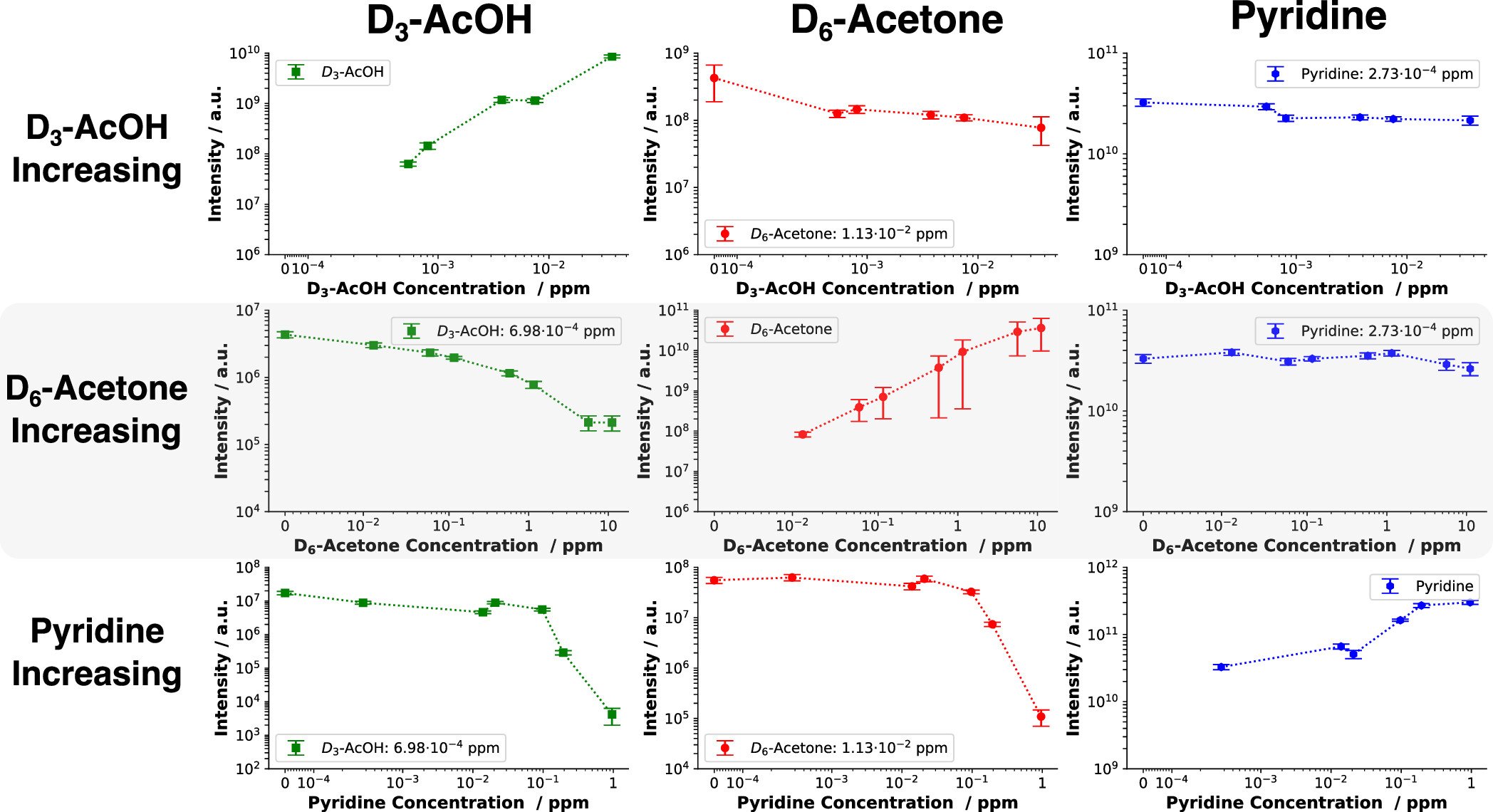Elucidating the Role of Ion Suppression in Secondary Electrospray Ionization
Cedric Wüthrich, Stamatios Giannoukos and Renato Zenobi.
Abstract
Ion suppression is a known matrix effect in electrospray ionization (ESI), ambient pressure chemical ionization (APCI), and desorption electrospray ionization (DESI), but its characterization in secondary electrospray ionization (SESI) is lacking. A thorough understanding of this effect is crucial for quantitative applications of SESI, such as breath analysis. In this study, gas standards were generated by using an evaporation-based system to assess the susceptibility and suppression potential of acetone, deuterated acetone, deuterated acetic acid, and pyridine. Gas-phase effects were found to dominate ion suppression, with pyridine exhibiting the most significant suppressive effect, which is potentially linked to its gas-phase basicity. The impact of increased acetone levels on the volatiles from exhaled breath condensate was also examined. In humid conditions, a noticeable decrease in intensity of approximately 30% was observed for several features at an acetone concentration of 1 ppm. Considering that this concentration is expected for breath analysis, it becomes crucial to account for this effect when SESI is utilized to quantitatively determine specific compounds.



